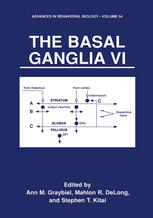

Most ebook files are in PDF format, so you can easily read them using various software such as Foxit Reader or directly on the Google Chrome browser.
Some ebook files are released by publishers in other formats such as .awz, .mobi, .epub, .fb2, etc. You may need to install specific software to read these formats on mobile/PC, such as Calibre.
Please read the tutorial at this link: https://ebookbell.com/faq
We offer FREE conversion to the popular formats you request; however, this may take some time. Therefore, right after payment, please email us, and we will try to provide the service as quickly as possible.
For some exceptional file formats or broken links (if any), please refrain from opening any disputes. Instead, email us first, and we will try to assist within a maximum of 6 hours.
EbookBell Team

4.8
44 reviewsThis volume, the sixth in the IBAGS series, summarizes major contributions in clinical and basic research on the basal ganglia. The sixth meeting of the Society was held on Cape Cod, in the state of Massachusetts, USA, in October, 1998. Altogether 16 countries were represented by 227 participants. This volume contains papers contributed by participants. The focus of the sixth triennial IBAGS meeting, and of this volume, was to bring to gether leaders in basic and clinical science to address two sets of still-persisting questions in the field. The first set focuses on the functions of the basal ganglia in health and disease: What are the core functions of the basal ganglia and cortico-basal ganglia loops? How are these core functions disrupted in disorders affecting the basal ganglia? How do we account for the broad range of behaviors affected by basal ganglia disorders and for the increasing evidence that the basal ganglia influence cognitive as well as motor functions? These issues are addressed in the first five sections of the current volume, which summarize advances in the study of basal ganglia disorders based on studies in humans (Section 1), new results obtained with experimental animal models of basal ganglia disorders (Section 2), results of experiments on information coding in the basal ganglia (Section 3) and new information about functions of the basal ganglia related to learning and adaptive motor control (Section 4).